
Impressionism was a 19th-century art movement characterized by relatively small, thin, yet visible brush strokes, open composition, emphasis on accurate depiction of light in its changing qualities, ordinary subject matter, unusual visual angles, and inclusion of movement as a crucial element of human perception and experience. Impressionism originated with a group of Paris-based artists whose independent exhibitions brought them to prominence during the 1870s and 1880s.

Paul Cézanne was a French artist and Post-Impressionist painter whose work laid the foundations of the transition from the 19th-century conception of artistic endeavour to a new and radically different world of art in the 20th century. Cézanne is said to have formed the bridge between late 19th-century Impressionism and the early 20th century's new line of artistic enquiry, Cubism.
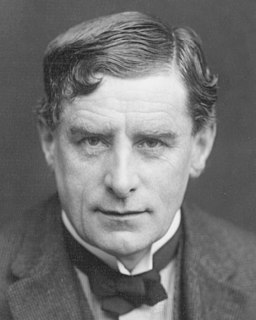
Walter Richard Sickert was a German-born British painter and printmaker who was a member of the Camden Town Group of Post-Impressionist artists in early 20th-century London. He was an important influence on distinctively British styles of avant-garde art in the mid- and late 20th century.

Post-Impressionism was a predominantly French art movement that developed roughly between 1886 and 1905, from the last Impressionist exhibition to the birth of Fauvism. Post-Impressionism emerged as a reaction against Impressionists' concern for the naturalistic depiction of light and colour. Its broad emphasis on abstract qualities or symbolic content means Post-Impressionism encompasses Les Nabis, Neo-Impressionism, Symbolism, Cloisonnism, the Pont-Aven School, and Synthetism, along with some later Impressionists' work. The movement's principal artists were Paul Cézanne, Paul Gauguin, Vincent van Gogh and Georges Seurat.
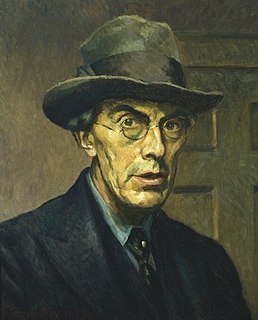
Roger Eliot Fry was an English painter and critic, and a member of the Bloomsbury Group. Establishing his reputation as a scholar of the Old Masters, he became an advocate of more recent developments in French painting, to which he gave the name Post-Impressionism. He was the first figure to raise public awareness of modern art in Britain, and emphasised the formal properties of paintings over the "associated ideas" conjured in the viewer by their representational content. He was described by the art historian Kenneth Clark as "incomparably the greatest influence on taste since Ruskin ...In so far as taste can be changed by one man, it was changed by Roger Fry". The taste Fry influenced was primarily that of the Anglophone world, and his success lay largely in alerting an educated public to a compelling version of recent artistic developments of the Parisian avant-garde.

The Athenæum was a British literary magazine published in London, England, from 1828 to 1921.

The Courtauld Gallery is an art museum in Somerset House, on the Strand in central London. It houses the collection of the Courtauld Institute of Art, a self-governing college of the University of London specialising in the study of the history of art.
Sir Charles John Holmes, KCVO was a British painter, art historian and museum director. His writing on art combined theory with practice, and he was an expert on the painting techniques of the Old Masters, from whose example he had learned to draw and paint.

Hubert Le Sueur was a French sculptor with the contemporaneous reputation of having trained in Giambologna's Florentine workshop. He assisted Giambologna's foreman, Pietro Tacca, in Paris, in finishing and erecting the equestrian statue of Henri IV on the Pont Neuf. He moved to England and spent the most productive decades of his working career there, providing monuments, portraits and replicas of classical antiquities for the court of Charles I, where his main rival was Francesco Fanelli.
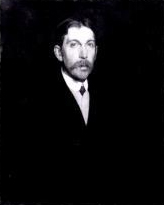
Francis Vane Phipson Rutter was a British art critic, curator and activist.
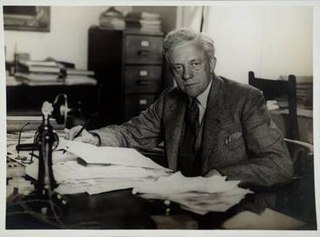
James Bolivar Manson was an artist and worked at the Tate gallery for 25 years, including serving as its director from 1930 to 1938. In the Tate's own evaluation he was the "least successful" of their directors. His time there was frustrated by his stymied ambition as a painter and he declined into alcoholism, culminating in a drunken outburst at an official dinner in Paris. Although his art policies were more advanced than previously at the Tate and embraced Impressionism, he stopped short of accepting newer artistic movements like Surrealism and German Expressionism, thus earning the scorn of critics such as Douglas Cooper. He retired on the grounds of ill health and resumed his career as a flower painter until his death.

The Stafford Gallery was an early 20th-century art gallery in London. Artists whose works were exhibited there include both internationally known painters such as Pablo Picasso, Paul Gauguin, Paul Cézanne and Gustave Courbet and significant English figures such as Walter Sickert and Sir William Nicholson.

Sir Herbert Frederick Cook, 3rd Baronet was an English art patron and art historian.

Côte des Bœufs at L'Hermitage is an oil-on-canvas landscape painting by the French Impressionist artist Camille Pissarro. It was painted in 1877, and displayed the same year at an exhibition now generally referred to as the third Impressionist exhibition. The picture is large by Pissarro's measure, and he described the effort of painting it as the 'work of a benedictine'. Pissarro was proud of the painting, and it remained in his family's possession until 1913. It presently hangs in the National Gallery, London.
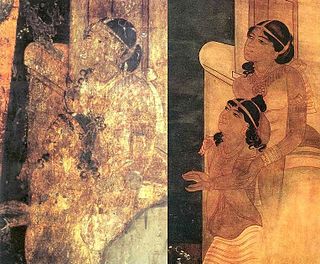
Christiana Jane Herringham, Lady Herringham was a British artist, copyist, and art patron. She is noted for her part in establishing the National Art Collections Fund in 1903 to help preserve Britain's artistic heritage. In 1910 Walter Sickert wrote of her as "the most useful and authoritative critic living".
Richard Shone is a British art historian and art critic specializing in British modern art, and from 2003–15 was the editor of The Burlington Magazine.
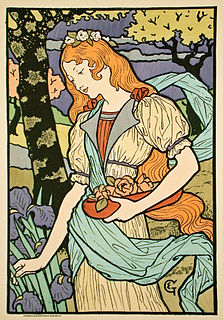
The Grafton Galleries, often referred to as the Grafton Gallery, was an art gallery in Mayfair, London. The French art dealer Paul Durand-Ruel showed the first major exhibition in Britain of Impressionist paintings there in 1905. Roger Fry's two famous exhibitions of Post-Impressionist works in 1910 and 1912 were both held at the gallery.
Ian Dunlop is a Scottish writer and former art critic for the Evening Standard. His first book, The Shock of the New, about seven historic exhibitions of modern art, was published in 1972. It was followed by books on Van Gogh, and on the life and art of Edgar Degas (1979). He has also written books and articles on contemporary American and British art and has contributed reviews and art criticism to The Times, Studio International, Apollo, The Times Literary Supplement and The Spectator.
Sir Samuel Squire Sprigge was an English physician, medical editor, and medical writer.
Dillian Rosalind Gordon OBE is a British art historian who worked as a curator at the National Gallery, London from 1978 to 2010, latterly as Curator of Italian Paintings before 1460. She lives in Oxford. She was appointed OBE in 2011 for services to Early Italian Painting. She has authored and co-authored many books, including several National Gallery catalogues.















